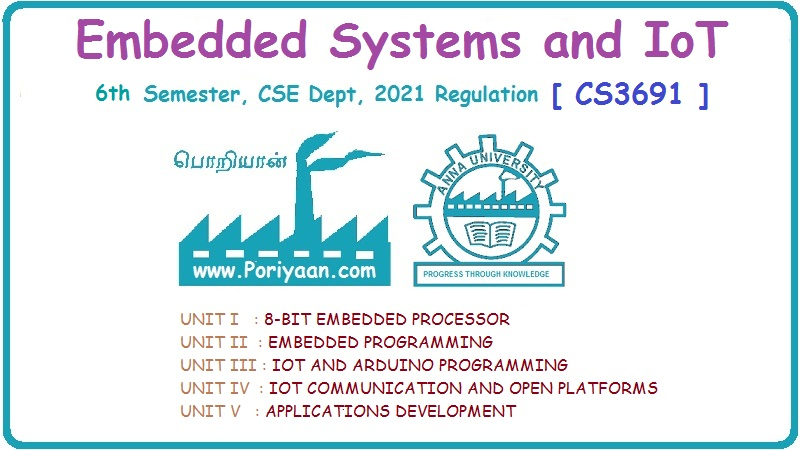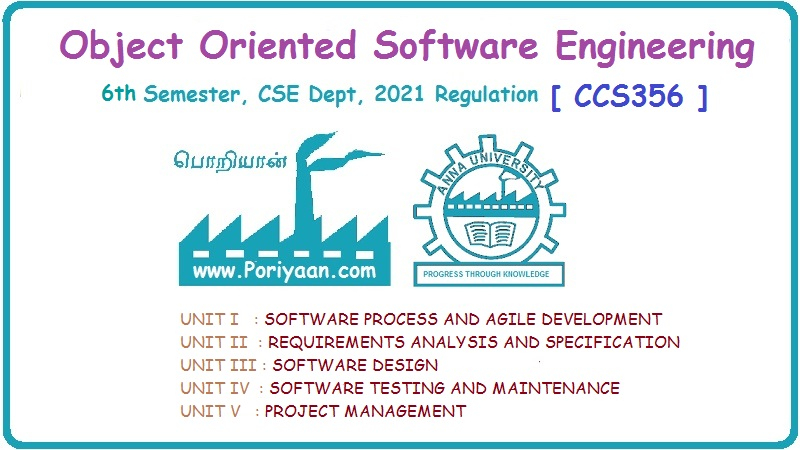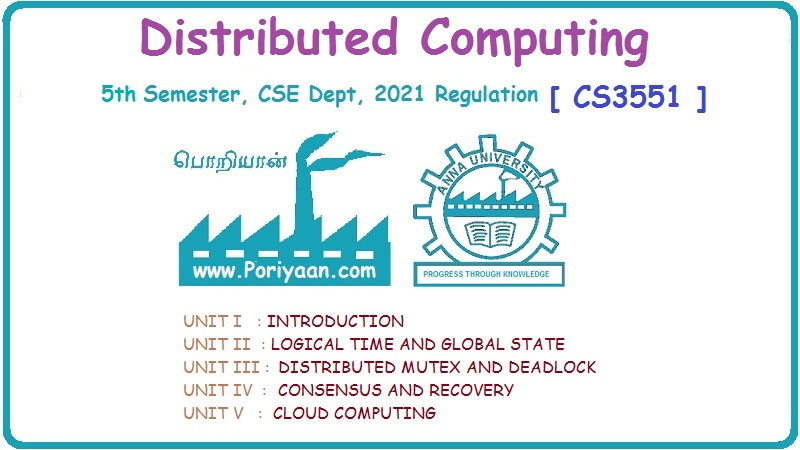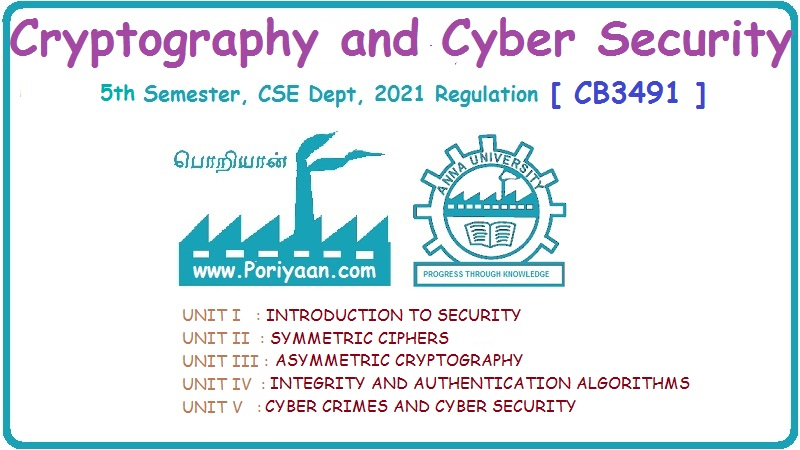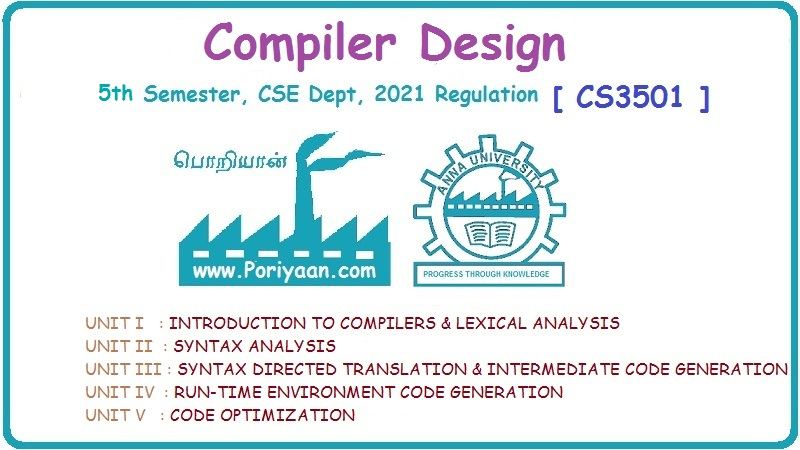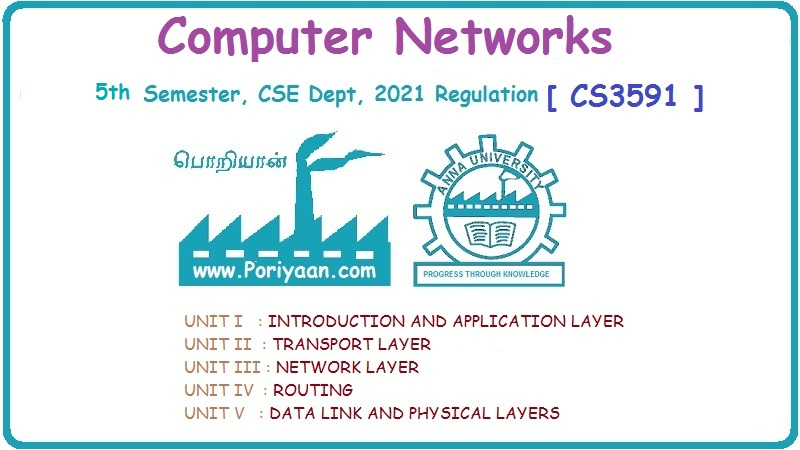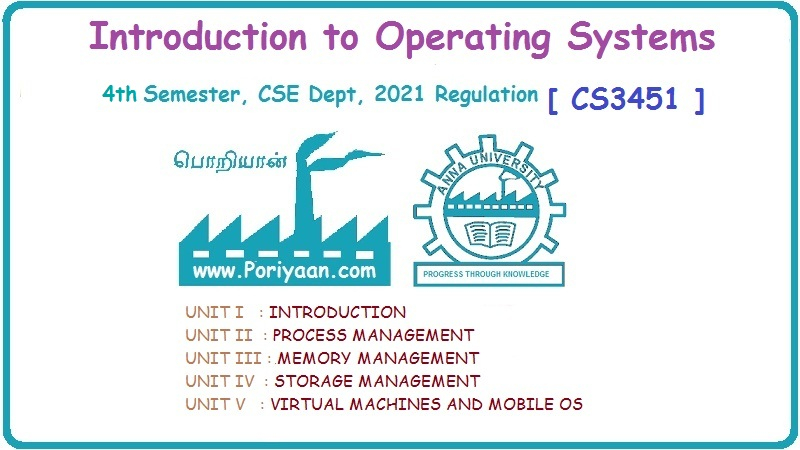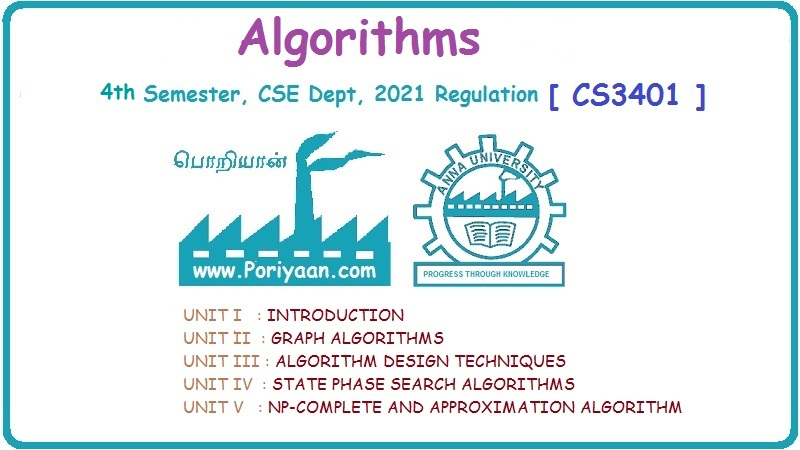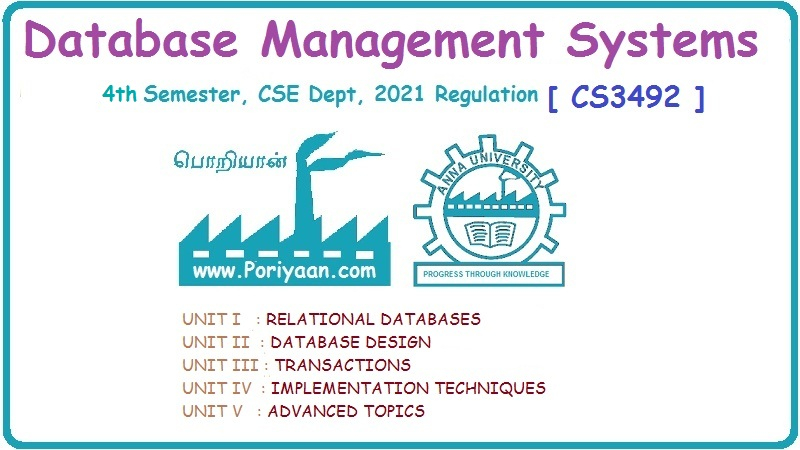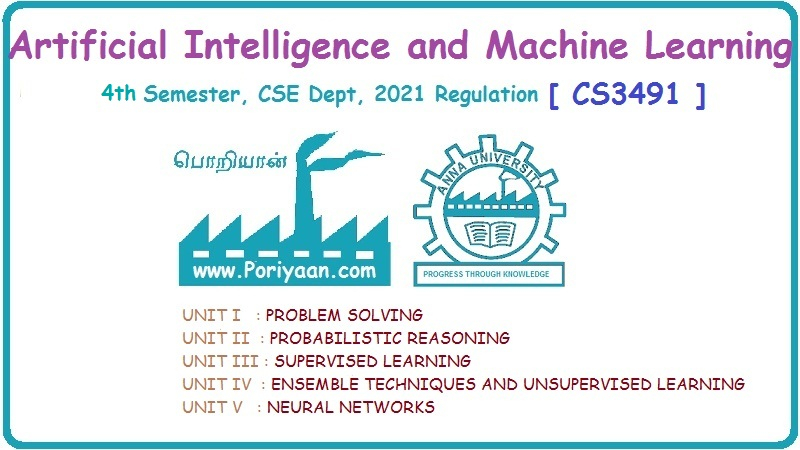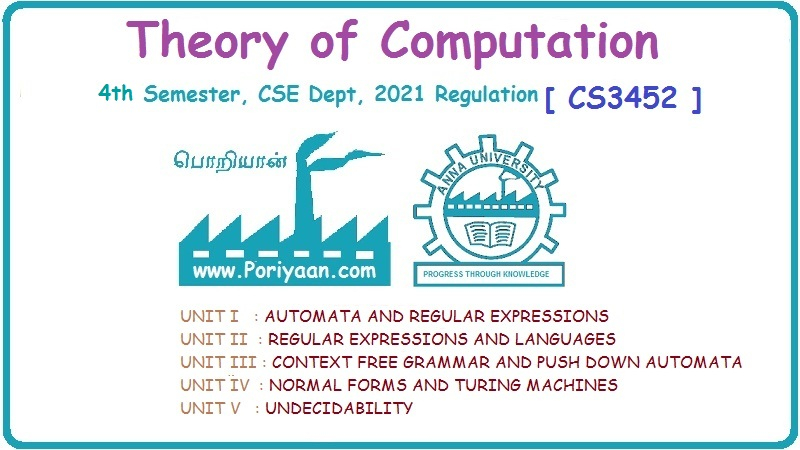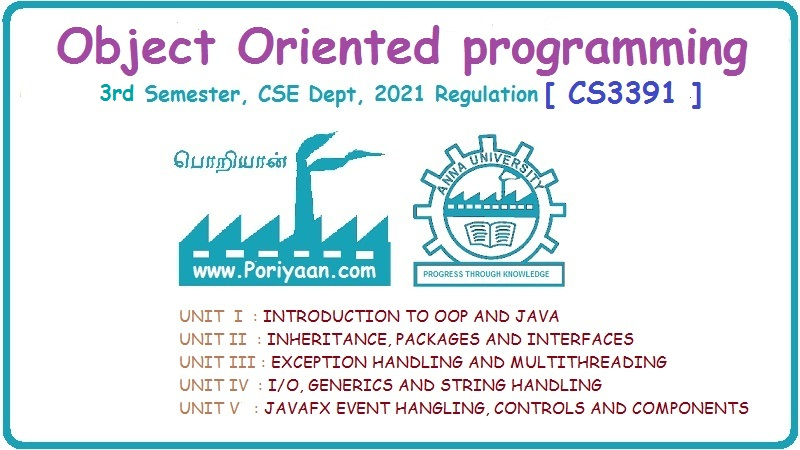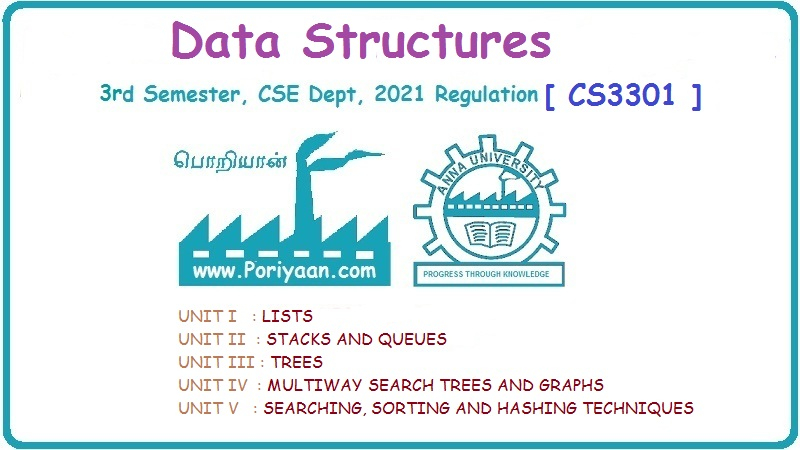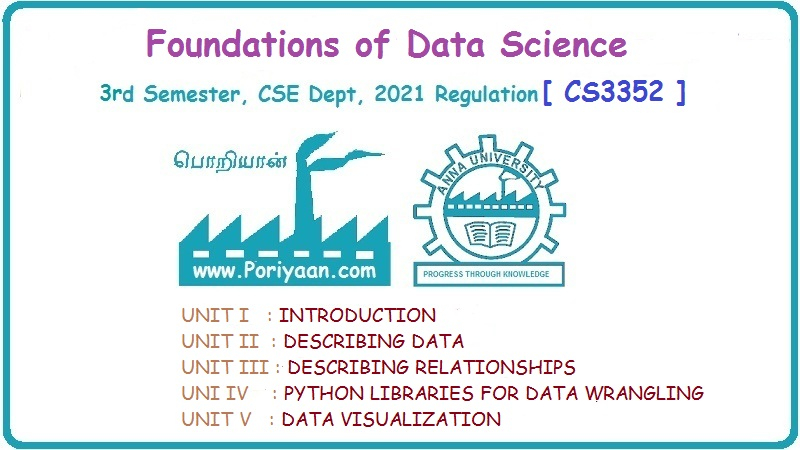Digital Principles and Computer Organization
CS3351 3rd Semester CSE Dept | 2021 Regulation

2021 regulation - 2nd year, 3rd semester paper for CSE Department (Computer Science Engineering Department). Subject Code: CS3351, Subject Name: Digital Principles and Computer Organization, Batch: 2021, 2022, 2023, 2024. Institute: Anna University Affiliated Engineering College, TamilNadu. This page has Digital Principles and Computer Organization study material, notes, semester question paper pdf download, important questions, lecture notes.
PDF Download Links
Digital Principles and Computer Organization
- Combinational Circuits
- Karnaugh Map Minimization
- Simplification of SOP Expression
- Simplification of POS Expression
- Five - Variable K-Map
- Summary of Rules for K-Map Simplification
- Limitations of Karnaugh Map
- NAND-NAND Implementation
- NOR-NOR Implementation
- Analysis Procedure
- Design Procedure
- Binary Adder Subtractor
- Code Conversion
- Magnitude Comparator
- Decoders
- Encoders
- Multiplexers
- Demultiplexers
- Two marks Questions with Answers
- Functional Units of Digital Computer
- Von Neumann Architecture
- Operation of the Computer Hardware
- Operands of the Computer Hardware
- Instructions
- Instruction Set Architecture (ISA)
- Memory Locations and Addresses
- Memory Operations
- Instruction and Instruction Sequencing
- Addressing Modes
- Encoding of Machine Instructions
- Interaction Between Assembly and Higher Level Language
- Two marks Questions with Answers
- Instruction Execution
- Basic MIPS Implementation
- Building a Data Path
- Designing a Control Unit
- Hardwired Control
- Microprogrammed Control
- Comparison Between Hardwired and Microprogrammed Control Units
- Pipelining
- Pipelined Datapath and Control
- Handling Data Hazards
- Handling Control Hazards
- Two marks Questions with Answers
PDF Download Links
Digital Principles and Computer Organization
Unit I: Combinational Logic
- Combinational Circuits
- Karnaugh Map Minimization
- Simplification of SOP Expression
- Simplification of POS Expression
- Five - Variable K-Map
- Summary of Rules for K-Map Simplification
- Limitations of Karnaugh Map
- NAND-NAND Implementation
- NOR-NOR Implementation
- Analysis Procedure
- Design Procedure
- Binary Adder Subtractor
- Code Conversion
- Magnitude Comparator
- Decoders
- Encoders
- Multiplexers
- Demultiplexers
- Two marks Questions with Answers
Unit II (b): Analysis & Design of Clocked Sequential Circuits
Unit III: Computer Fundamentals
- Functional Units of Digital Computer
- Von Neumann Architecture
- Operation of the Computer Hardware
- Operands of the Computer Hardware
- Instructions
- Instruction Set Architecture (ISA)
- Memory Locations and Addresses
- Memory Operations
- Instruction and Instruction Sequencing
- Addressing Modes
- Encoding of Machine Instructions
- Interaction Between Assembly and Higher Level Language
- Two marks Questions with Answers
Unit IV: Processor
- Instruction Execution
- Basic MIPS Implementation
- Building a Data Path
- Designing a Control Unit
- Hardwired Control
- Microprogrammed Control
- Comparison Between Hardwired and Microprogrammed Control Units
- Pipelining
- Pipelined Datapath and Control
- Handling Data Hazards
- Handling Control Hazards
- Two marks Questions with Answers
PDF Download Links

CS3351
DIGITAL
PRINCIPLES AND COMPUTER ORGANIZATION
COURSE
OBJECTIVES:
•
To analyze and design combinational circuits.
•
To analyze and design sequential circuits
•
To understand the basic structure and operation of a digital computer.
•
To study the design of data path unit, control unit for processor and to
familiarize with the hazards.
•
To understand the concept of various memories and I/O interfacing.
UNIT I COMBINATIONAL LOGIC
Combinational
Circuits – Karnaugh Map - Analysis and Design Procedures – Binary Adder –
Subtractor – Decimal Adder - Magnitude Comparator – Decoder – Encoder –
Multiplexers - Demultiplexers
UNIT II SYNCHRONOUS SEQUENTIAL LOGIC
Introduction
to Sequential Circuits – Flip-Flops – operation and excitation tables,
Triggering of FF, Analysis and design of
clocked sequential circuits – Design – Moore/Mealy models, state minimization, state assignment, circuit
implementation - Registers – Counters.
UNIT III COMPUTER FUNDAMENTALS
Functional
Units of a Digital Computer: Von Neumann Architecture – Operation and Operands
of Computer Hardware Instruction –
Instruction Set Architecture (ISA): Memory Location, Address and Operation – Instruction and Instruction
Sequencing – Addressing Modes, Encoding of Machine Instruction – Interaction between Assembly
and High Level Language.
UNIT IV PROCESSOR
Instruction
Execution – Building a Data Path – Designing a Control Unit – Hardwired
Control, Microprogrammed Control –
Pipelining – Data Hazard – Control Hazards.
UNIT V MEMORY AND I/O
Memory
Concepts and Hierarchy – Memory Management – Cache Memories: Mapping and Replacement Techniques – Virtual Memory – DMA
– I/O – Accessing I/O: Parallel and Serial
Interface – Interrupt I/O – Interconnection Standards: USB, SATA
PRACTICAL
EXERCISES:
1.
Verification of Boolean theorems using logic gates.
2.
Design and implementation of combinational circuits using gates for arbitrary
functions.
3.
Implementation of 4-bit binary adder/subtractor circuits.
4.
Implementation of code converters.
5.
Implementation of BCD adder, encoder and decoder circuits
6.
Implementation of functions using Multiplexers.
7.
Implementation of the synchronous counters
8.
Implementation of a Universal Shift register.
9.
Simulator based study of Computer Architecture
COURSE
OUTCOMES:
At
the end of this course, the students will be able to:
CO1
: Design various combinational digital circuits using logic gates
CO2
: Design sequential circuits and analyze the design procedures
CO3
: State the fundamentals of computer systems and analyze the execution of an
instruction CO4 : Analyze different types of control design and identify
hazards
CO5
: Identify the characteristics of various memory systems and I/O communication
TEXT
BOOKS:
1.
M. Morris Mano, Michael D. Ciletti, “Digital Design : With an Introduction to
the Verilog HDL, VHDL, and System
Verilog”, Sixth Edition, Pearson Education, 2018.
2.
David A. Patterson, John L. Hennessy, “Computer Organization and Design,
The Hardware/Software Interface”, Sixth
Edition, Morgan Kaufmann/Elsevier, 2020.
REFERENCES:
1.
Carl Hamacher, Zvonko Vranesic, Safwat Zaky, Naraig Manjikian, “Computer
Organization and Embedded Systems”,
Sixth Edition, Tata McGraw-Hill, 2012.
2.
William Stallings, “Computer Organization and Architecture – Designing for
Performance”, Tenth Edition, Pearson
Education, 2016.
3.
M. Morris Mano, “Digital Logic and Computer Design”, Pearson Education, 2016.
Digital Principles and Computer Organization: Unit I: Combinational Logic,, Digital Principles and Computer Organization: Unit II (a): Synchronous Sequential Logic,, Digital Principles and Computer Organization: Unit II (b): Analysis & Design of Clocked Sequential Circuits,, Digital Principles and Computer Organization: Unit II (c): Registers,, Digital Principles and Computer Organization: Unit II (d): Counters,, Digital Principles and Computer Organization: Unit III: Computer Fundamentals,, Digital Principles and Computer Organization: Unit IV: Processor,, Digital Principles and Computer Organization: Unit V: Memory and I/O 3rd Semester CSE Dept 2021 Regulation : CS3351 3rd Semester CSE Dept | 2021 Regulation Digital Principles and Computer Organization
